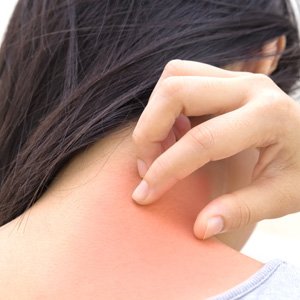As temperatures rise, so does the risk of heat rash, an irritating skin condition that commonly affects people in hot, humid weather. Often appearing as clusters of small, itchy bumps, heat rash can range from mildly uncomfortable to intensely aggravating. This article covers how to recognize heat rash, what triggers it, and, most importantly, how to treat and prevent it.
What is Heat Rash?
Heat rash, or miliaria, develops when sweat gets trapped in blocked skin pores, leading to inflammation and redness. It’s common among people of all ages but tends to affect infants and those living in warm climates. Depending on the severity, heat rash can cause anything from slight itching to painful blisters.
Recognizing the Symptoms of Heat Rash
Heat rash can appear in several forms, each with distinct characteristics:
- Miliaria Crystallina: This is the mildest form, characterized by clear, fluid-filled bumps that often burst easily. It’s generally painless and affects only the surface layer of the skin.
- Miliaria Rubra (Prickly Heat): The more common type, miliaria rubra, presents as red, inflamed bumps that cause an itching or “prickling” sensation. It typically occurs in areas with friction, like the armpits, neck, and inner elbows.
- Miliaria Profunda: This severe form develops deeper within the skin and can cause large, flesh-colored bumps. Although rare, it’s often associated with prolonged exposure to heat and is likely to recur in those who experience frequent episodes of heat rash.
- Miliaria Pustulosa: When the sweat glands become infected, the bumps may fill with pus, forming pustules. It’s a rare but more serious form of heat rash that requires medical attention.
Causes of Heat Rash
The primary cause of heat rash is blocked sweat ducts. This can happen due to:
- High Temperatures and Humidity: Warm, sticky conditions make it harder for sweat to evaporate, increasing the chance of blockages.
- Physical Activity: Exercise or strenuous work in warm environments can lead to excessive sweating and ultimately to blocked sweat glands.
- Clothing Choices: Tight, non-breathable clothing restricts air circulation, trapping moisture against the skin.
- Poor Air Circulation: Staying in confined spaces without adequate airflow can also raise the risk of developing heat rash.
How to Treat Heat Rash
Although heat rash usually resolves on its own, these steps can relieve discomfort and accelerate healing:
- Cool Down: Move to a cool, shaded area and avoid heat exposure. Air-conditioned environments are ideal, as they help prevent further sweating.
- Keep the Skin Dry: Gently pat the affected area with a clean, dry towel to reduce moisture. Avoid rubbing, as it can worsen the irritation.
- Use Calamine Lotion or Hydrocortisone Cream: These over-the-counter remedies can help reduce itching and inflammation. Apply as directed to avoid excess dryness.
- Wear Loose, Breathable Clothing: Choose lightweight fabrics like cotton that allow air circulation. This can reduce friction and keep your skin cool.
- Avoid Heavy Lotions or Creams: Thick products can clog sweat ducts, so opt for light, water-based moisturizers or skip moisturizers until the rash clears.
- Cold Compresses: A cold compress applied for 10–15 minutes can provide immediate relief from itching and discomfort.
When to Seek Medical Attention
Heat rash usually clears within a few days, but seek medical help if:
- The rash doesn’t improve or worsens.
- Pus-filled blisters form, indicating a possible infection.
- Fever or chills accompany the rash, suggesting a more serious condition.
Preventing Heat Rash
Prevention is the best approach to dealing with heat rash, especially if you’re prone to it. Here are some tips:
- Stay Hydrated: Drinking plenty of water helps regulate body temperature and prevents excessive sweating, reducing the risk of blocked pores.
- Dress for the Weather: Wear loose, light-colored, and breathable fabrics that allow sweat to evaporate easily.
- Take Cool Showers: After physical activity or time spent in the heat, shower with cool water to refresh your skin and open up pores.
- Limit Heavy Physical Activity: During peak heat, try to avoid intense exercise or heavy lifting. Choose cooler parts of the day, such as early morning or evening, for activities.
- Use Talcum or Baby Powder: Lightly dust powder over areas prone to heat rash, such as the neck or inner thighs, to absorb excess moisture and prevent irritation.
- Ventilate Living Spaces: If possible, use fans or air conditioning to improve airflow, especially in confined or humid spaces. This helps cool down your skin and reduces the need to sweat as much.
The Bottom Line on Heat Rash
Heat rash may seem like a minor inconvenience, but ignoring its symptoms or failing to treat it can lead to complications. Recognizing the type of rash, cooling the skin, and keeping the affected area dry are essential to managing symptoms effectively. Additionally, preventive measures like dressing appropriately, staying hydrated, and managing activity levels can go a long way in avoiding future episodes.
Heat rash doesn’t have to put a damper on your summer. With simple, mindful steps, you can keep your skin healthy, even in the hottest conditions.

